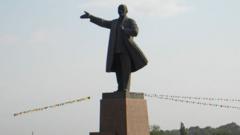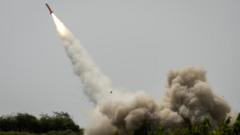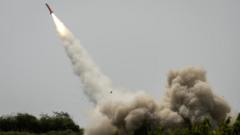The statue, which stood for five decades in Osh, reflects Kyrgyzstan's ongoing efforts to reshape its identity post-Soviet Union, despite possible tensions with Russia.
Kyrgyzstan's Iconic Lenin Statue Removed Amid National Identity Shift

Kyrgyzstan's Iconic Lenin Statue Removed Amid National Identity Shift
Kyrgyzstan has dismantled its towering Lenin statue, marking a significant moment in the country's evolving national narrative.
Kyrgyzstan has officially brought down a monumental statue of Vladimir Lenin, the Soviet revolutionary leader, once considered the tallest in Central Asia. Stretching 23 meters, this iconic structure has overlooked the city of Osh for fifty years but was quietly dismantled earlier this week. Photos surfaced on Saturday depicting the statue lying prone on the ground, having been carefully lowered by cranes.
The decision to remove the statue aligns with a broader trend among former Soviet republics to redefine their national identities, minimizing the influence of their Soviet past. However, local officials have downplayed the significance of this action. Authorities in Kyrgyzstan are acutely aware of the delicate balance they must maintain with Russia, particularly following the unveiling of a new statue of Josef Stalin in Moscow just a week prior.
A statement from Osh City Hall described the statue's relocation as a routine measure aimed at enhancing the city's "architectural and aesthetic appearance." The city officials noted similar past actions in Russia, implying that this is a common practice rather than a politically charged statement. The Lenin statue will eventually be replaced by a flagpole, following a similar precedent established when another Lenin statue was removed in Bishkek.
Kyrgyzstan's independence from the Soviet Union was declared 34 years ago, yet the echoes of this complex history remain integrated into the national landscape. The country is even home to Lenin Peak, its second-highest mountain—a persistent reminder of its ties to the former Soviet era.




















